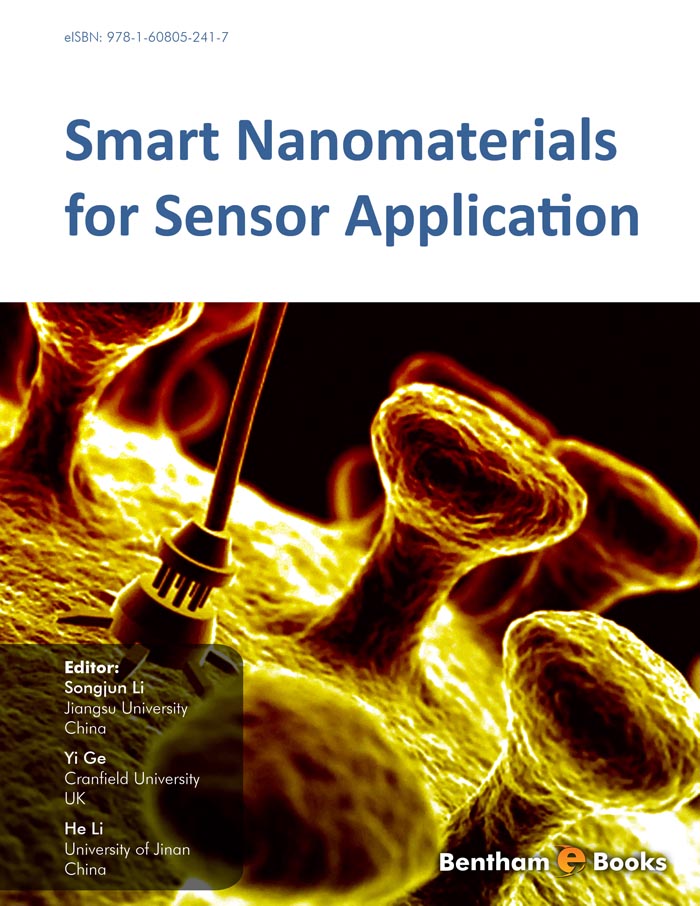I welcome the timely publication of this book on smart materials and their applications in sensors. The actual and potential impact of sensors and sensing systems is enormous and covers multifarious applications ranging from environmental monitoring and protection to pharmaceutical separation and analysis, and from defence and security to medicine and healthcare. It encompasses everything from electronics and materials to biotechnology and nanotechnology. The emerging challenges associated with public exposure to pollution and hazardous substances have fueled an urgent need for novel sensors and sensing systems to support toxicogenomic studies and protect populations. Over the past decades, scientists in this field have been working under pressure to meet these challenges. Sophisticated sensors and sensing materials are now available for evaluation and significant progress has been made in environmental protection, analytical technologies and the development of new materials. Prominent among them are smart nanomaterials, which combine the exciting properties of nanomaterials (such as electrical superconduction, paramagnetic properties and quantum optics) with enhanced diffusion properties and surface area to support a revolution in the design of sensors.
This book compiles ten well-organized chapters related to the field of sensors and smart nanomaterials. The emphasis is on highlighting rapid, specific, sensitive, inexpensive, in-field, on-line and/or real-time detection by smart nanomaterials sensors. Singh et al. provide a review in the first chapter on smart nanomaterials and their applications in the field of sensors. Emerging trends and challenges for smart nanomaterials sensors are given in detail in this opening chapter. Diverging disciplines and fields, such as bionanoelectronics, nanotechnology, biotechnology and miniaturization, are exerting remarkable influences on the development of new sensing devices. The chapter by Marrazza is focused on metal nanoparticle-based biosensors. This is a developing field that combines nanoscale materials with biosensor technologies to achieve the direct wiring of enzymes onto electrode surfaces, and to promote electrochemical reactions, as well as incorporating nanobarcodes and signal amplification from biorecognition events. Studies have demonstrated that metal nanoparticles-based biosensors have important potential applications in the fields of environmental and medical analysis, due to their sensitivity, specificity, rapidity, simplicity and cost-effectiveness.
Molecular imprinting is one of the latest developments in the field of sensors. In chapter 3, Zhao et al. introduce molecularly imprinted nanomaterials-based sensors. Molecularly imprinted nanomaterials are classified as nanoparticles (including core-shell nanoparticles), nano-wires and tubes, and nanofilms. They review the working principles, methods used and binding events by molecularly imprinted nanosensors. In Chapter 4, Singh and Chen describe thermosensitive polymers and their applications for the prolonged delivery of contraceptive hormones to women. Salaimutharasan et al. review the recent progress made in nanosensors in Chapter 5. Nanosensors are used as the biological, chemical and surgical information sources to convey information. Current developments will allow the transfer of information from a nanoscale space to the macroscopic world. In the following chapter Banerjee et al. study the preparation of CdSe nanoparticles in the presence of self-assembled Abscisic acid (ABA). It appears possible that CdSe nanoparticles may lead to a new family of bio-imaging nanomaterials for cancer cell targeting and, in addition, provide a host for optoelectronic applications. Smith et al describe the fabrication and optimization of a hydrogel delivery system for wound healing in Chapter 7. Zhu et al. introduce, in Chapter 8, the use of advanced carbon nanotubes and fibers in the field of sensors. Carbon nanotube-based biosensors demonstrate potential for the rapid diagnosis of life-threatening diseases. Singh et al. review selected gold nanoparticle-based biosensors. Giuliani and Ge describe 1D nanostructures and their application in sensors in Chapter 9. Nanowires, nanorods and nanotubes are known as the 1-D nanostructure prototype, which is characterized by cross sections as small as 1 micrometer and some microns in length. They can be generated by either adding gold nuclei to a growing solution or by using a template-based method. The 1-D nanostructure offers a significant potential in healthcare and safety.
It would take several extensive volumes to cover all the details of smart nanomaterials sensors. Thus, this book can only hope to provide an overview and highlight some of the most important recent researches. The editors have made an admirable attempt to include the most extensively studied areas, which should be of interest to a broad range of investigators and researchers.
I would like to thank both Bentham Science Publishers and the leading editor Dr. Songjun Li for their invitation to write this Foreword and to congratulate all the contributors for making this interesting book possible. Thanks also should be expressed to the Research Directorate-General of European Commission and the National Science Foundation of China for supporting this work under both the Marie Curie Actions (No. PIIF-GA-2009-236799 and PIIF-GA-2010-254955) and the National Science Funding Project No. 21073068. It is my hope that this book will provide valuable information to a broad range of researchers.
Professor Anthony P.F. Turner, PhD, DSC, FRSC
Biosensors & Bioelectronics
IFM-Linköping University, S-58183, Linköping
Sweden

